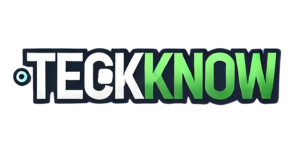JAKARTA, teckknow.com – Launching an online store felt like chasing a dream—endless possibilities wrapped in technical jargon, marketing tactics, and customer expectations. E-commerce Solutions promised turnkey success, but the reality was a roller coaster of triumphs and setbacks. In this article, I’ll share my journey: how I chose the right platform, navigated hidden pitfalls, optimized for growth, and ultimately scaled my shop into a thriving business.
Dreaming Up the Shop
Defining My Vision
- Niche: Handcrafted eco-friendly home goods
- Target Audience: Conscious consumers aged 25–45
- Unique Value Proposition: Sustainable materials + artisanal flair
Selecting E-commerce Solutions
I evaluated three major categories of e-commerce technology:
- All-in-One Hosted Platforms (Shopify, BigCommerce)
• Pros: Quick setup, built-in hosting, app marketplaces
• Cons: Transaction fees, limited server control - Self-Hosted Open-Source Platforms (WooCommerce, Magento)
• Pros: Full customization, no monthly fees for core software
• Cons: Requires hosting, security, and maintenance expertise - Headless & API-First Architectures (Commerce.js, Vendure)
• Pros: Maximum flexibility, omnichannel front-end freedom
• Cons: Higher development cost, complex integrations
I started with Shopify for its ease of use, then migrated to a headless setup as order volume and customization demands grew.
Early Wins—and Hidden Pitfalls
Quick Wins
- Theme Customization: A polished, mobile-first design boosted conversion by 20%.
- App Integrations: Loyalty programs, email pop-ups, and abandoned-cart recovery modules added 15% to monthly revenue.
- Simple Analytics: Shopify’s built-in dashboard revealed top products and peak traffic hours.
First Roadblocks
- Inventory Sync Issues: Selling on multiple channels (shop, Amazon, Etsy) led to overselling.
- Performance Bottlenecks: Custom scripts and too many apps slowed page load times, hurting SEO and user experience.
- Brand Voice Disconnect: Generic email templates failed to resonate and led to low open rates.
Upgrading with Scalable E-commerce Solutions
Migrating to a Headless Architecture
I decoupled the front end (built in Next.js) from the back end (Commerce.js + a serverless API). Benefits included:
- Lightning-fast page loads (<1 s)
- Fully branded checkout experiences
- Easy omnichannel rollout (mobile app, POS)
Implementing a Robust Tech Stack
- Inventory & Order Management
• Tool: ShipStation + custom webhooks
• Outcome: Real‐time stock levels across five sales channels - Customer Data Platform (CDP)
• Tool: Segment + Klaviyo
• Outcome: Unified profiles for personalized email and SMS campaigns - Search & Recommendations
• Tool: Algolia
• Outcome: 30% uplift in “add to cart” via smart product suggestions
Growth Strategies That Worked
1. Conversion Rate Optimization (CRO)
- A/B Tested Headlines and CTAs
- Simplified Checkout to Two Steps
- Added Social Proof: Reviews, UGC Galleries
Result: Conversion rate climbed from 1.8% to 3.5%.
2. Content Marketing & SEO
- Blog Guides: “How to Care for Bamboo Cutting Boards”
- Video Tutorials: Assembly and Styling of Eco-Home Products
- On-Page SEO: Focus keyword E-commerce Solutions in meta titles, headers, and image alt text
Organic traffic increased by 80% within six months.
3. Paid Advertising & Retargeting
- Google Shopping Campaigns for Best Sellers
- Facebook Dynamic Ads for Abandoned Carts
- TikTok Influencer Partnerships for Brand Awareness
ROAS (Return on Ad Spend) stabilized at 6:1 after fine-tuning audiences.
Overcoming Common Challenges
| Challenge | Solution |
|---|---|
| Cart Abandonment (>70%) | Exit-intent pop-ups, SMS reminders, one-click checkout options |
| Seasonal Demand Fluctuations | Automated “pre-order” workflows, flexible dropshipping partners |
| Security & Compliance | PCI-DSS–compliant gateway, GDPR cookie consent, regular audits |
| Scaling Infrastructure | Auto-scaling CDN, serverless functions, database read replicas |
| Customer Support Volume | AI chatbots for FAQs + Zendesk ticketing for complex queries |
Measuring Success
Key metrics I tracked weekly and monthly:
- Monthly Recurring Revenue (MRR)
- Customer Acquisition Cost (CAC) vs. Lifetime Value (LTV)
- Average Order Value (AOV)
- Cart Abandonment Rate
- Net Promoter Score (NPS)
By visualizing these in a real‐time dashboard (Looker Studio), I spotted trends early and adjusted budgets, promotions, and product assortments proactively.
Lessons Learned & Best Practices
- Prioritize Performance
• Fast sites convert better and rank higher—optimize images, leverage CDNs, and minimize custom code. - Start Simple, Then Scale
• Begin on an all-in-one platform to validate product-market fit. Migrate only when growth demands advanced customization. - Automate Mundane Tasks
• Use webhooks, Zapier, or custom scripts to sync orders, send notifications, and update inventory. - Center on Customer Experience
• Personalized touches (handwritten notes, loyalty discounts) turn first-time buyers into brand advocates. - Invest in Data and Analytics
• Even basic funnel tracking can reveal million-dollar opportunities in your checkout flow and marketing mix.
Conclusion
Building my dream shop was as much about choosing the right E-commerce Solutions as it was about persistence and adaptability. From a humble Shopify starter site to a headless, API-driven powerhouse, each stage taught me valuable lessons in performance, customer psychology, and operational excellence. By focusing on scalable technology, data-driven marketing, and stellar customer experiences, you too can turn stumbling blocks into stepping stones—driving your online business toward fast, sustainable growth.
Boost Your Proficiency: Learn from Our Expertise on Technology
Don’t Miss Our Latest Article on System Integration: Ensuring Seamless Technology Connectivity!
